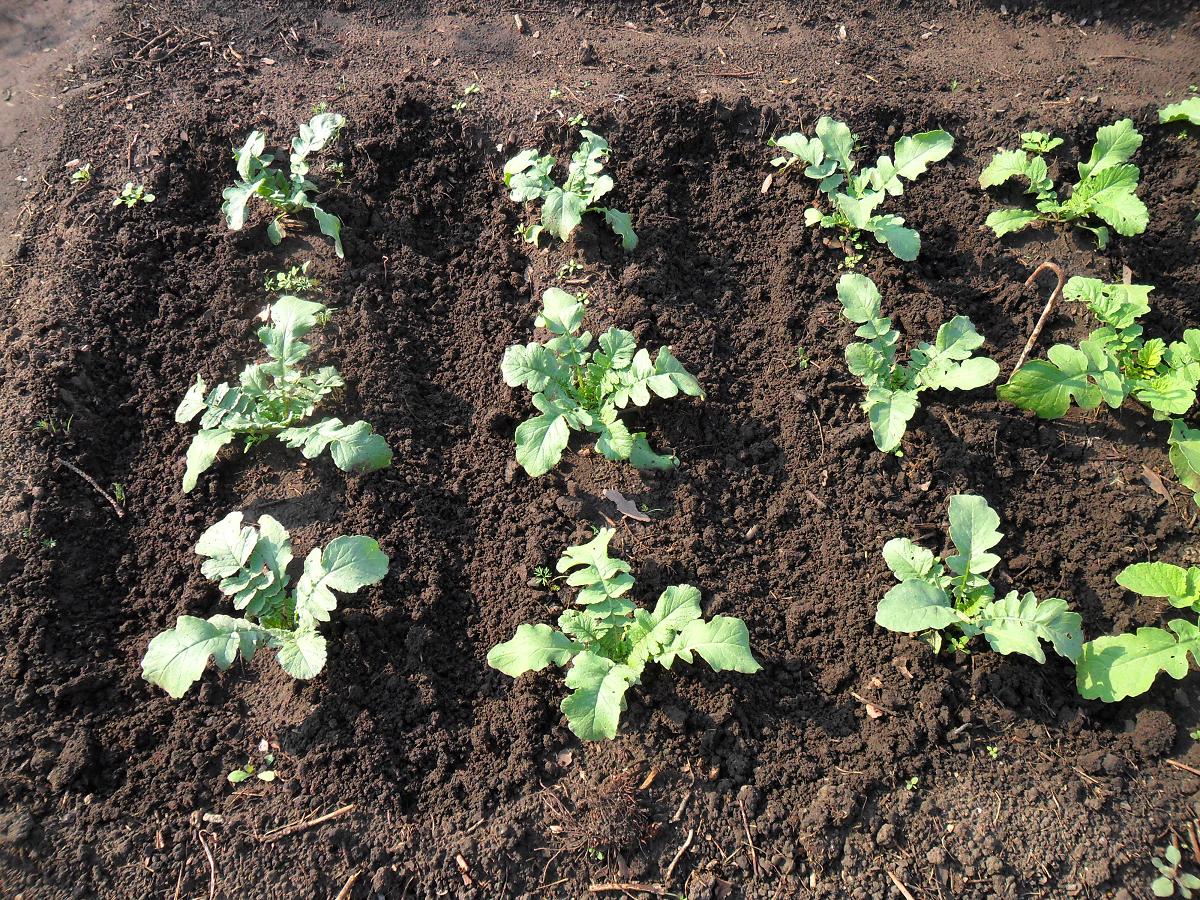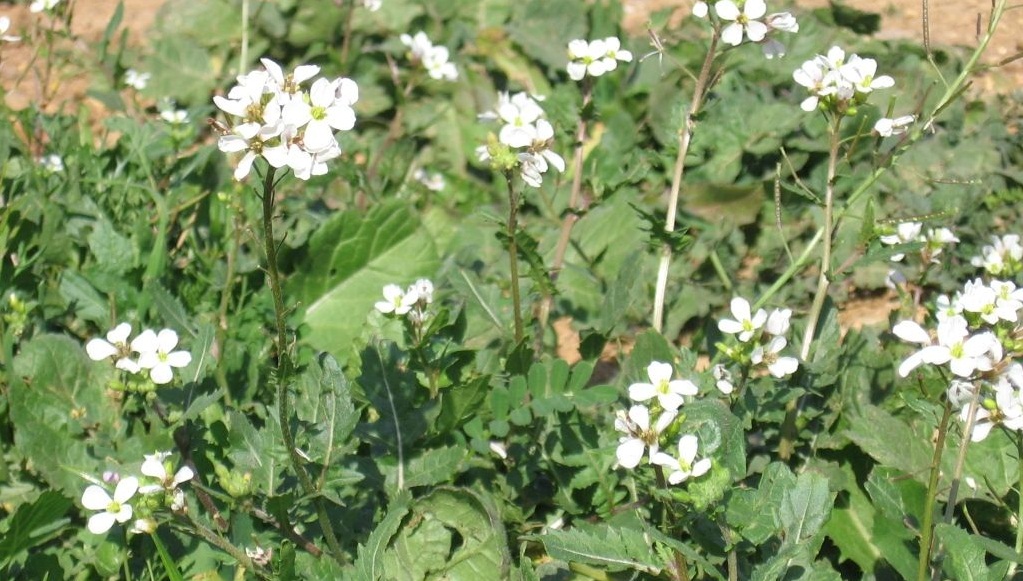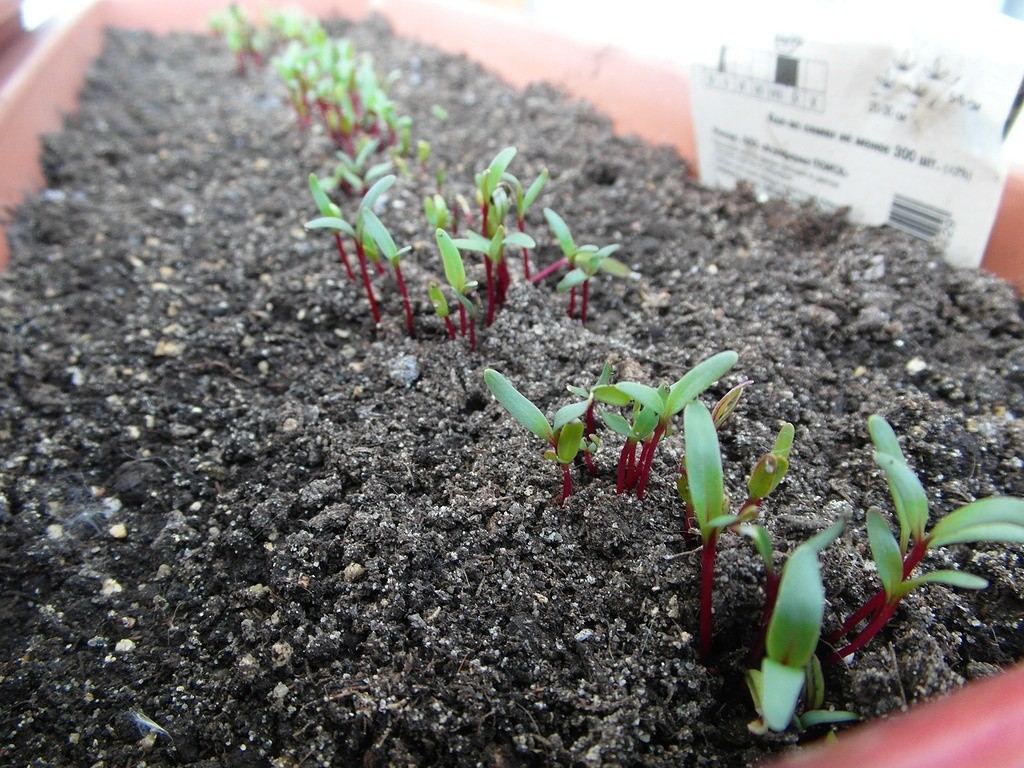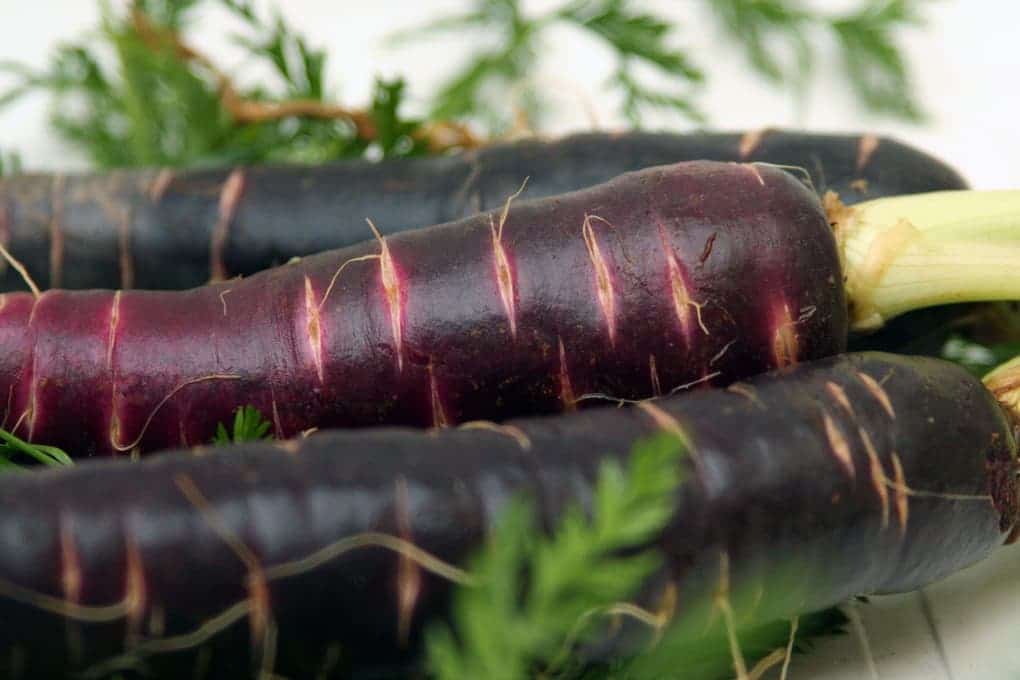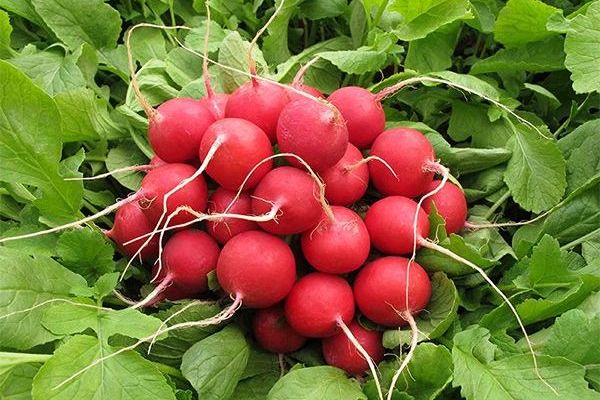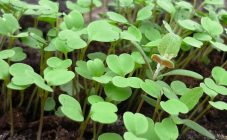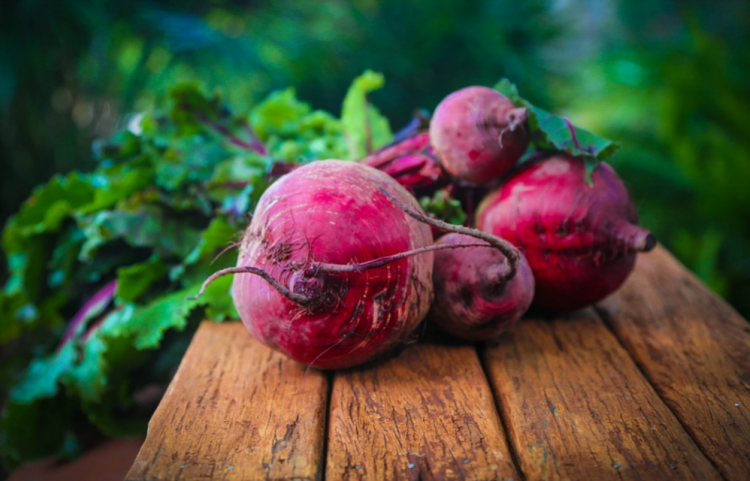Content:
Daikon is a radish of Japanese origin. The selective development of the vegetable came from the Asian variety of the Lobo radish, which grows in China. The root vegetable in the classic version has a long cylindrical shape and a milder taste, in contrast to the bitter radish.
Characteristics of culture
Radish Daikon is an annual or biennial plant of the Cruciferous family. It has the same biological group with radishes, turnips and other types of radish: European and Chinese.
Spreading leaves, green, coarsely dissected, 50-60 cm long.
Classic root crops are white, new breeding forms green, pink, light purple skin colors.
Daikon has an elongated cylindrical and conical shape, from 10 to 60 cm in length, and the round shape of a common radish.
Daikon contains no mustard oils, so its taste is mild, suitable for use in small quantities for people with gastrointestinal diseases, without harming and irritating the mucous membrane, unlike radish and European radish.
Root crops for winter storage are pulled out of the ground before frost, they are able to maintain their qualities for up to 4 months, being in cool rooms.
Purpose - the main use of fresh culture, in salads. Various culinary treatments are possible: heat treatment, salting, pickling.
Agrotechnics of culture
A special property of the culture, like other Cruciferous plants, is that the plant needs a short daylight hours to form root crops. Long daylight hours in early summer bring the plant into bloom. Therefore, Daikon should be planted in two periods: in early spring or after mid-summer. Planting and care planting dates for Daikon radish are described in the instructions for the variety. Versatile varieties with a low degree of flowering can be planted in the ground throughout the season. Planting classic varieties begins from the first week of July, from the 7th to the 25th. The crop is suitable for growing in greenhouses, but the shape of the root crop and the depth of the greenhouse ridge should be considered. For greenhouses and heavy soils, it is favorable to choose varieties of spherical forms of vegetables. There are varieties with 2/3 protruding aboveground part.
The soil under a cylindrical elongated radish is dug deeply, with the selection of stones and weeds, otherwise the root crop will grow of an irregular shape.
When planning a crop rotation, it will be optimal to plant the Daikon on the vacant bed after collecting early crops. Other Cruciferous plants should not be predecessors: radishes, radishes, turnips and cabbage. With these crops, the plant has common pests: cruciferous flea and cabbage fly. Pests can completely destroy the crop.
An easy way of planting is in open ground. Daikon seeds are round, brown, similar to radish seeds, but larger. If you open a bag with seeds, you can see them there in small quantities, so it would be more expedient to plant them at once sparsely. The culture does not like thickening; one root crop requires a sufficient amount of space in the garden.
It is convenient to plant large seeds one at a time, without pre-treatment. Planting the seeds is shallow, in marked holes, by 1-2 cm. The distance between plants is 25 cm, between rows - 40-45 cm. Planting is two-line, optimal for the crop's requirements for lighting. The well is spilled with water before sowing. The seeds do not need to be pressed into the ground with effort, but only laid out on the bottom of the hole. 1-2 cm of soil is poured from above, lightly tamped, mulched with peat. After planting, the seedlings are watered for better survival. Seedlings appear in a week.
With thickened sowing, planting several seeds in one hole, after the appearance of 2-3 true leaves, the plants are thinned out, leaving one, the strongest and healthiest, in the nest. If both specimens in the nest are full-fledged, then one of them can be transplanted, keeping it.
The best soils for Daikon are fertile, loose, sandy, sufficiently breathable. The culture is demanding on moisture, without water stagnation. Does not like drought, including air, the optimum temperature for plant growth and development is + 15 + 18C, at elevated temperatures it can go into color. The soil must be constantly moistened, without drops, otherwise the pulp coarsens, begins to taste bitter. Grows poorly in shaded conditions. Low-lying areas that do not dry out well after rain are not allocated for Daikon. At high humidity, plants will fall ill with mucous bacteriosis.
Obligatory weeding and loosening is performed 3-4 times during the growth period.
Fertilizers are best applied for previous crops; fresh manure is not allowed. During the growing season, organic fertilizers are applied in liquid form. Such fertilizers can be herbal infusions or diluted chicken droppings, according to the planting area. When the first 3-4 true leaves appear, ash is introduced, scattering it over the leaves.
Harvesting and collecting seeds
Culture hybrids with the designation f1 do not represent the opportunity to collect their own seeds, therefore they are bred using professional selection methods. These seeds have the best crop qualities and can be purchased at specialized gardening stores.
Varieties of this crop can be reproduced from their own seeds. Daikon blooms quickly, with a long daylight hours. But it is important to consider that seeds are not harvested in the first year. High-quality seeds are formed in the second year with the transfer method. For planting on seed, healthy, strong specimens of the current year's harvest, planted since mid-summer, are selected. Selected root crops are carefully cleaned from the ground, dried and placed in a cool place until the next season. In spring, the roots are planted again, they form flower arrows, after flowering green peas are formed. The peas should be ripe to brown.
Root crops for food and storage ripen 1.5-2 months after planting the seeds.
Vegetables are harvested in the dry period of autumn, before frost. It may take two people to pull a ripe Daikon out of the ground. With a length of root crops of about half a meter, it is not always possible to dig them out with a shovel without damage. Damaged root vegetables will not be stored. To soften the earth, spill water and pull out the root crop by pulling the tops.
Large, healthy specimens are put in storage, smaller ones will dry quickly. Daikon can be stored for several months in the refrigerator, packed in plastic bags. Holes must be made in the bags for air permeability. When stored fresh for more than 4 months, it may lose its taste.When freezing, the root crop becomes unsuitable for consumption.
The advantages and disadvantages of culture
The virtues of culture:
- Daikon has valuable nutritional qualities;
- easy and quick to grow, subject to the requirements for planting dates and sites;
- replaces radishes and radishes for those people for whom they are contraindicated for health;
- practically not exposed to pests and diseases;
- fast growing season, allowing for multiple harvests per season.
Juicy, aromatic, healthy culture has no disadvantages.
Daikon is a popular Asian culture that is part of many Chinese, Korean, Thai dishes. The cultivation of root crops creates several times less accumulation of nitrates, salts of heavy metals and radioactive substances than other vegetables. Japanese radish is a dietary culture for proper nutrition.

